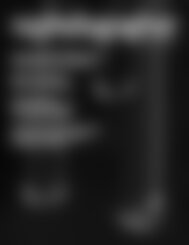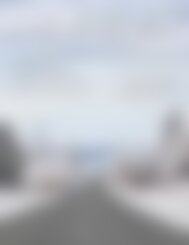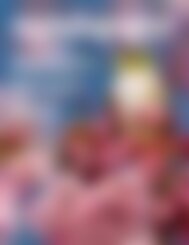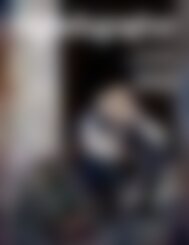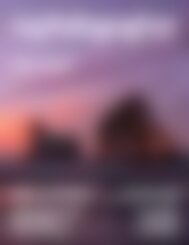NZPhotographer Issue 24, October 2019
As of December 2022, NZPhotographer magazine is only available when you purchase an annual or monthly subscription via the NZP website. Find out more: www.nzphotographer.nz
As of December 2022, NZPhotographer magazine is only available when you purchase an annual or monthly subscription via the NZP website. Find out more: www.nzphotographer.nz
You also want an ePaper? Increase the reach of your titles
YUMPU automatically turns print PDFs into web optimized ePapers that Google loves.
We headed outside and wandered about. The<br />
sun had gone behind some clouds so I was<br />
feeling better about the outside shots now. We<br />
found a nice cliff edge and while we discussed<br />
compositions and posing one of the ladies sat<br />
down and looked incredibly beautiful with soft<br />
light around her. She’d finally relaxed and I turned<br />
to take my shot. Sometimes it’s the moments<br />
between the moments that provide the best<br />
images and I think the photo 'A Moment To Relax'<br />
is still my favourite shot from the few days I spent<br />
in the village.<br />
Next up, I wanted an environmental portrait<br />
of a Dropka man and two women so as to<br />
showcase their traditional dress. Dropkas wear<br />
such elaborate costumes with each piece having<br />
significance beyond aesthetics or practicalities.<br />
Silver and turquoise amulet boxes are worn<br />
around their necks, sometimes filled with the<br />
ashes or fragments of ancestors. The silver reflects<br />
evil away from the body not letting it enter and<br />
turquoise protects from demons and is a poison<br />
detector that was traditionally used to line the rim<br />
of tea cups.<br />
The headdress worn by both men and women<br />
that you see in ‘Telling the Story’(next page) is<br />
called a Ko. The Ko is adorned with flowers both<br />
artificial and real, coins and silver, again for<br />
purposes of protection. Men wear a crimson tunic<br />
called a goucha and women wear a tunic called<br />
a kuntop, loaded with beads, coral, shells, and<br />
silver over which sits a goatskin cape.<br />
I feel that placing your subjects in their ‘natural<br />
environment’ can really help form a story to<br />
support your photography.<br />
The following day we visited a 400-year-old house<br />
with a mud-packed floor and I felt like I had gone<br />
back in time. The woman of the house, Dolma<br />
had never had her photo taken before so I had<br />
to sit with her for some time chatting via my<br />
translator asking all sorts of questions getting to<br />
know her, and even then it was hard to get her to<br />
relax in front of the camera. All she wanted was<br />
for me to photograph her most prized possession,<br />
a copper ladle.<br />
Kitchens are the most important rooms in Ladakhi<br />
houses, some can fit up to 50 people and are<br />
where the family lives, eats and sleeps during<br />
the bitter winter months as they’re the only<br />
rooms with a fire. I sat with her on a filthy, matted<br />
goatskin, and admired her ability to prepare<br />
any sort of meal at all in this rudimentary space.<br />
Photographing here was perhaps the most<br />
difficult of all as it was very dark indeed. Even with<br />
my Lume Cube, a reflector, and some light rays<br />
from a side window I had to up my ISO and to be<br />
honest it still wasn’t sufficient. I hate high ISO so<br />
didn’t want to go any higher than 800. Yes, ideally<br />
a speedlight and a softbox would have worked<br />
well, and in the future I may well travel with one<br />
for my groups, but on the flip side, you do lose<br />
some ambiance when using too much artificial<br />
light.<br />
While I had been photographing Dolma, her<br />
husband had started spinning a prayer wheel<br />
in the back corner of the kitchen. The adjacent<br />
window was now letting in some brighter light and<br />
I noticed the highlights on part of his face. He<br />
looked very photogenic. I chatted to him about<br />
the conversion from animism to Buddhism that<br />
some of the Aryans are going through and this<br />
helped to focus his attention and for him to relax.<br />
Getting to know your subject, spending some time<br />
talking with them, is integral and a nice way to<br />
build rapport before you start pointing a camera<br />
in their direction. Dolma’s husband continued<br />
to spin the prayer wheel and I took a number of<br />
shots attempting to get just enough blur on the<br />
wheel as it spun in order to show movement. The<br />
lighting was beautiful, but still quite contrasty<br />
against the darker side of the room.<br />
Three days later we left the village and headed<br />
back to Leh and I thought to myself how<br />
privileged I had been. I captured a moment in<br />
time that may never be seen again. As remote<br />
tribes like these have more contact with the<br />
outside world it will undoubtedly impact their<br />
culture. It’s quite a dilemma in fact, as the act of<br />
recording culture also aids in its demise.<br />
While there I looked hard at them and thought<br />
how unconnected and unchanged they were,<br />
but in actual fact, change has come, is coming<br />
and will continue to come. When you have the<br />
opportunity to do something like this you feel<br />
humbled but also curious for more. In order to<br />
complete this chapter in my own photographic<br />
exploration I plan to visit their original home in<br />
Gilgit, Pakistan in the not too distant future.<br />
www.instagram.com/phomadic<br />
www.susanblick.com<br />
www.facebook.com/susanblickphoto<br />
albums.excio.io/profile/Susan Blick Photography<br />
<strong>October</strong> <strong>2019</strong> 17




